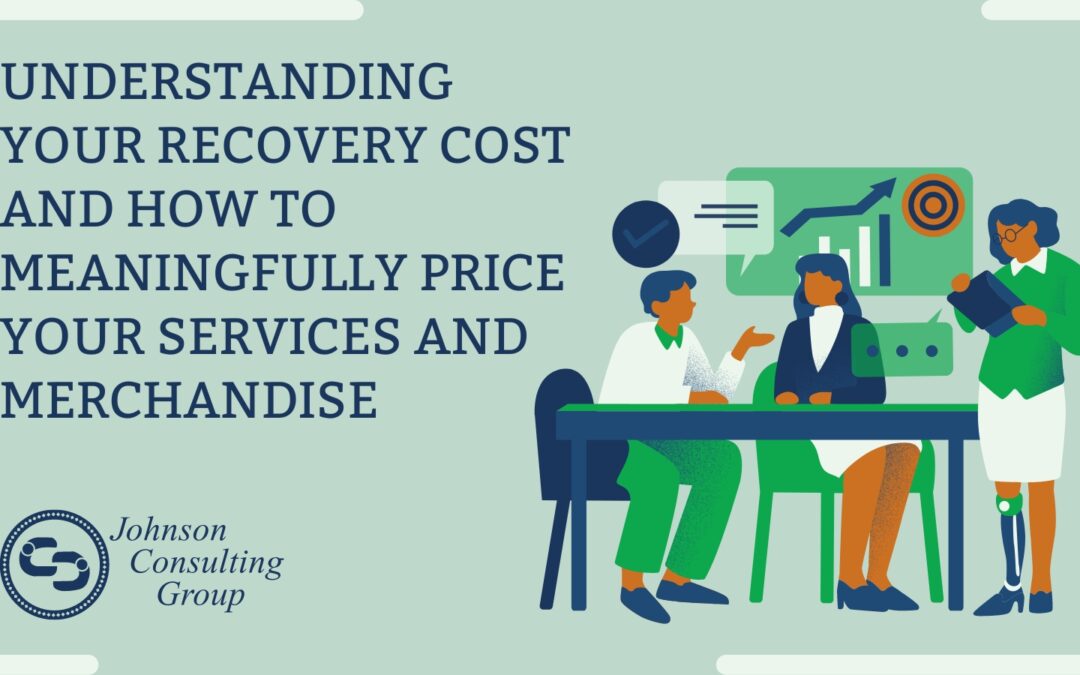Historically, when funeral home owners contemplate the inevitability of increasing prices, one of the first steps in the process is to compare prices to the competition. Although it is well worth considering there is no more important comparison than is your forecasted Revenue meets or exceeds and Operational Expense. Knowing what it takes to provide a service at your funeral homes is critical to determining what you need to make from that service. The minimum operational expense involved in providing a service, we refer to as Recovery Cost.
Calculating Recovery Cost, and How to Effectively Update Your Prices
In the simplest of terms, Recovery cost represents the cost of operation related to specific funeral services. Imagine if every family was required to pay an equal share of the business’ operational costs.
Hypothetical:
Funeral home provides burial and cremation services (200 annually) at an average cost of $5,000 generating $1,000,000 in revenue.
The annual operational expense is $700,000 rendering a 30% Profit (JCG client target profitability).
The Recovery Cost for the funeral home is $3,500 ($700,000 / 200 cases = $3,500).
The funeral home has a 50% case mix charging $8,500 for burial and $1,500 for cremation.
Note, the cremation sales average of $1,500 is ($2,000) short of the firm’s recovery cost. However, the burial sales average of $8,500 exceeds the recovery cost by $7,000 and easily subsidizes the cremation sales.
However, the funeral home is experiencing a gradual case mix shift decreasing burial and increasing cremation by 5% respectively. This shift in case mix would result in a drop in profitability from 30% to 27.5%. If this trend continues to a 40% burial and 60% cremation mix, profitability will drop to 18.6% (an 11.4% drop in profitability).
In the past, funeral homes had the luxury of generating more revenue from burial services, which helped subsidize the artificially lowered charges for direct cremations to remain comparable to a competitor who may have substantially lower costs of operation. However, with cremation rates reaching 70-80% in some markets, the landscape has changed. Funeral homes now find themselves in a precarious position, struggling to subsidize cremations as the case mix shifts and facing a continuous drop in overall revenue. Couple this with increasing Labor Costs and Cost of Goods Sold, and the challenge intensifies.
The previous hypothetical is a simplified scenario to help illustrate a trend. The cost of conducting a traditional burial is substantially different from that of a direct cremation and should reflect that in the pricing. However, as cremation mix continues to increase it will be necessary for it to bear the recovery cost of your funeral home without regard to your competition.
To address this, funeral home owners must examine their recovery cost for the services they provide. Considering factors such as full-time equivalency (FTE), the significant increases in Cost of Goods Sold, the increase cost of labor for new employees and the potential cost of adjusting the salaries of veteran employees, inflation, etc.
The Fear of Losing Call Volume: A Common Concern
A common concern that looms over funeral home owners contemplating a price adjustment is the fear of losing call volume due to higher prices driving families away. Although, the thought of losing a family is antithetical to our caregiver mentality, it’s essential to recognize that this fear can be misleading. If you’re providing services at a loss or barely breaking even, the long-term results may jeopardize your overall ability to serve families at all and will definitely impact the firm’s enterprise value and your personal succession plan.
Real-World Examples
In working with funeral and cemetery operations across the country, we consistently observe firms increasing their burial costs by 3+% (5-8% in recent years). By contrast, cremation prices were held constant due to competition. This results in a common question we are asked, “I’m busier than ever and making less money – Why is that?”
By holding the line on cremation prices, their revenue sources shifted, and they found themselves not generating income in line with the way their expenses had increased.
This example serves as a powerful reminder of the critical role recovery cost plays in maintaining the financial health of a funeral home. It prompts us to question the conventional wisdom of merely meeting competition prices and encourages a shift towards charging based on the actual cost of running a unique funeral home operation.
Understanding your recovery cost is a crucial first step for funeral home owners looking to set meaningful prices for their services and merchandise. It’s time to move away from the traditional mindset of merely meeting competition prices. Instead, charge based on what it takes to run your funeral home efficiently, factoring in the unique aspects that set your business and the services you provide apart from the competition.
Contact Us Today
About Johnson Consulting Group:
Johnson Consulting Group is dedicated to providing comprehensive business solutions and tools to achieve heightened performance, profitability, and success within the funeral and cemetery industry. Our expert services encompass Succession Planning, selling funeral homes and cemeteries, financing solutions, business coaching, accounting services, business performance analysis, customer survey programs, Customer Experience workshops, incentive compensation plans, and Leadership and Management training.
